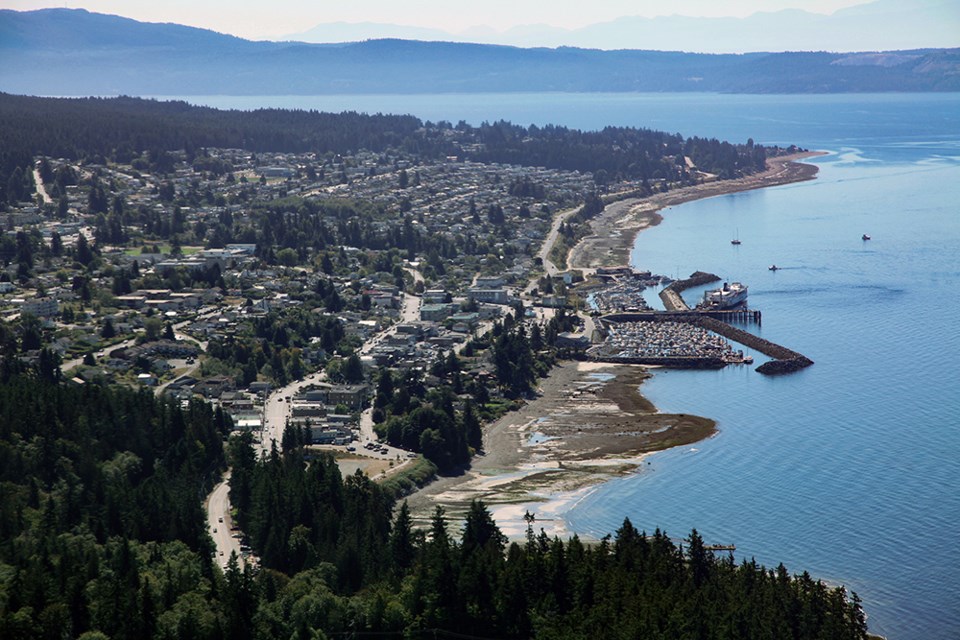Census figures collected in 2021 indicate growth in both City of Powell River and qathet Regional District.
The city’s population in 2021 was 13,942, compared to 13,157 in 2016. Statistics Canada indicates that this is a six per cent growth in the five-year period.
“The prediction was correct that our population has grown nicely,” said Powell River mayor Dave Formosa. “We’re certainly seeing the results at city hall. We’re not surprised by the increase in population and we predicted it.”
Formosa said the city received figures from Statistics Canada on prospective growth about four or five months ago that indicated Powell River had grown by 600 to 800 people.
“We also knew, because superintendent of schools Dr. Jay Yule told me that the school enrolment had grown considerably for the first time in many years,” said Formosa. “So, we had a good idea that this was coming.”
The city in 2021 had a total of 6,718 private dwellings. These are defined as a separate set of living quarters with a private entrance. In terms of private dwellings occupied by usual residents, there were 6,402.
Population density per square kilometre in the city is 482.4, with a land area of 28.91 square kilometres.
Population in qathet Regional District has risen 7.1 per cent between 2016 and 2021. Population in 2021 was 21,496, compared to 20,070 in 2016. Population figures in the regional district include Powell River. The city is part of the regional district.
In the regional district, there were a total of 11,921 private dwellings. Population density is 4.2 people per square kilometre. The land area of the regional district is 5,067.89 square kilometres.
Formosa said one of the prospective downsides of the increase in population is it brings the city nearer to the number where the city will have to bear increased policing costs.
“One of my big concerns is the policing contract,” said Formosa. “It’s a population of 15,000 where we pick up additional costs.” Formosa said that currently, the city pays 70 per cent of the policing costs, and if the population goes up to 15,000, the city has to pay 90 per cent.
He said in terms of taxation, when he was first elected to city council 14 years ago, a one per cent tax increase amounted to about $73,000. He said that now, a one per cent tax increase provides the city about $150,000.
“People need to understand that’s the pressure we’re under,” said Formosa. “Over the years we’ve had no growth in industry, and we’ve had no growth in commercial, but now, it is starting to come around.”
Mayor looks ahead
Formosa said if the prospective hydrogen fuel project that is looking at the Catalyst Paper Tis’kwat mill site goes ahead, it will be beneficial for the city. In December, Formosa announced that Renewable Hydrogen Canada had been working with Catalyst and the province, looking into building a hydrogen methane plant at the mill site to create methane fuel.
“If it comes about it will be massive for Powell River,” said Formosa. He said such a scenario could have significant tax implications for the city, given that industrial and commercial taxpayers provide proportionately higher revenue than housing taxation. He said under those circumstances, the city would find itself in great shape.
“Over the last 14 years, the council has done a very good job maneuvering itself out of being an industrial mecca and embracing the communication revolution,” said Formosa. “We’re working with quality of life, concern for the environment, concern for families and all of the things we have done. What we’ve promoted was by design.
“COVID-19 added wind to the sails, whereby after six to eight months, people started looking for safe havens to live in a place that had great cultural assets, great city assets and great outdoor assets that are close to a metropolitan city. Our isolation is not isolation, it’s insulation that helped foster wanting to live in a community such as ours. It’s working. You can see it in the schools, you can see it in the streets.”
Formosa said unfortunately, real estate values have risen substantially so the city needs to partner in finding ways to assist people in getting affordable housing.
Regional chair comments
Regional district chair Patrick Brabazon said his understanding is that while there was a 7.1 per cent population increase in the regional district, in Electoral Area A, which he represents, there was a 13 per cent spike in population over the five-year span.
“The figures I’ve seen show a sizable increase in all of the electoral areas in the regional district,” said Brabazon. “The question is: why? We’ve heard there are a lot of people fleeing the urban areas for the countryside. I think that may be part of it. Other than that, this is a great place to live, so why wouldn’t they come here? Anecdotally, I hear that a lot of seniors are moving up here.”
Canada’s latest census shows BC had the second-highest population growth among the provinces, with immigration, not fertility, hiking the province’s numbers.
The population in BC grew by 7.6 per cent between 2016 and 2021. In BC, the 2021 population was 5 million; the 2016 population was 4.6 million.
~ With files from the Canadian Press.



